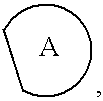Dihydroindazole compounds useful in treating iron disorders
a technology of dihydroindazole and compounds, applied in the field of dihydroindazole compounds, can solve the problems of increased subsequent disease risk, increased morbidity and mortality, and considerable tissue damage, and achieve the effect of reducing adverse events and increasing the potency of existing or future drug therapies
- Summary
- Abstract
- Description
- Claims
- Application Information
AI Technical Summary
Benefits of technology
Problems solved by technology
Method used
Image
Examples
preparation 1
Preparation of ethyl 6-bromo-2-oxo-1,2,3,4-tetrahydronaphthalene-1-carboxylate
[0374]To a 250 mL two-necked flask fitted with a pressure-equalizing dropping funnel and a reflux condenser was added sodium hydride (60% suspension in mineral oil, 2.66 g, 66.6 mmol). The mineral oil was removed by washing with anhydrous benzene (2×20 mL). Anhydrous benzene (120 mL) and diethyl carbonate (6.7 mL, 55.5 mmol) were added. The reaction mixture was heated at reflux and the dropping funnel was charged with a solution of 6-bromo-2-tetralone (1.8 mL, 13.7 mmol) in anhydrous benzene (20 mL). This solution was added to the reaction mixture over a period of 3 h. The reaction mixture was maintained at reflux for 30 minutes and was allowed to cool to ambient temperature. Glacial acetic acid (15 mL) was added dropwise and a heavy, pasty solid was precipitated. Ice-cold water (100 mL) was added and stirring was continued until all solid material had dissolved. The mixture was transferred to a separatory...
preparation 2
Preparation of ethyl 6-methoxy-2-oxo-1,2,3,4-tetrahydronaphthalene-1-carboxylate
[0375]To a solution of 6-methoxy-2-tetralone (0.34 g, 1.89 mmol) in anhydrous diethyl carbonate (8 mL) was added sodium hydride (60% dispersion in mineral oil, 0.23 g, 5.67 mmol). The reaction mixture was heated at reflux for 2 h, allowed to cool to ambient temperature and concentrated in vacuo. The residue was partitioned between diethyl ether (20 mL) and 1 M hydrochloric acid (20 mL) and transferred to a separatory funnel. The aqueous phase was extracted with diethyl ether (2×20 mL). The organic phase was washed with brine (20 mL), dried over sodium sulfate, filtered and concentrated in vacuo. The residue was subjected to flash chromatography eluted with 4% to 12% ethyl acetate in hexanes to afford ethyl 6-methoxy-2-oxo-1,2,3,4-tetrahydronaphthalene-1-carboxylate as a pale yellow oil in 68% yield (0.32 g): 1H NMR (300 MHz, CDCl3) δ 13.22 (s, 1H), 7.63 (d, J=8.6 Hz, 1H), 6.75-6.65 (m, 2H), 4.36 (q, J=7....
preparation 3
Preparation of 6-p-tolyl-3,4-dihydronaphthalen-2(1H)-one
[0383]A mixture of 6-bromo-2-tetralone (0.45 g, 2.00 mmol), 4-tolylboronic acid (0.27 g, 2.00 mmol), sodium carbonate (0.64 g, 6.00 mmol), palladium(II) acetate (0.002 g, 0.01 mmol), tetra-n-butylammonium bromide (0.66 g, 2.00 mmol) and water (4 mL) in a sealed tube was heated under microwave irradiation (60 W, 150° C.) for 7 minutes. The reaction mixture was allowed to cool to ambient temperature, diluted with ethyl acetate (30 mL) and water (30 mL) and transferred to a separatory funnel. The aqueous phase was extracted with ethyl acetate (2×20 mL). The organic phase was washed with water (3×20 mL) and brine (20 mL), dried over sodium sulfate, filtered and concentrated in vacuo to dryness. The residue was subjected to column chromatography eluted with 15% to 40% ethyl acetate in hexanes to afford 6-p-tolyl-3,4-dihydronaphthalen-2(1H)-one as a colorless solid in 51% yield (0.24 g): 1H NMR (300 MHz, CDCl3) δ 7.51-7.42 (m, 4H), 7...
PUM
 Login to View More
Login to View More Abstract
Description
Claims
Application Information
 Login to View More
Login to View More - R&D
- Intellectual Property
- Life Sciences
- Materials
- Tech Scout
- Unparalleled Data Quality
- Higher Quality Content
- 60% Fewer Hallucinations
Browse by: Latest US Patents, China's latest patents, Technical Efficacy Thesaurus, Application Domain, Technology Topic, Popular Technical Reports.
© 2025 PatSnap. All rights reserved.Legal|Privacy policy|Modern Slavery Act Transparency Statement|Sitemap|About US| Contact US: help@patsnap.com



